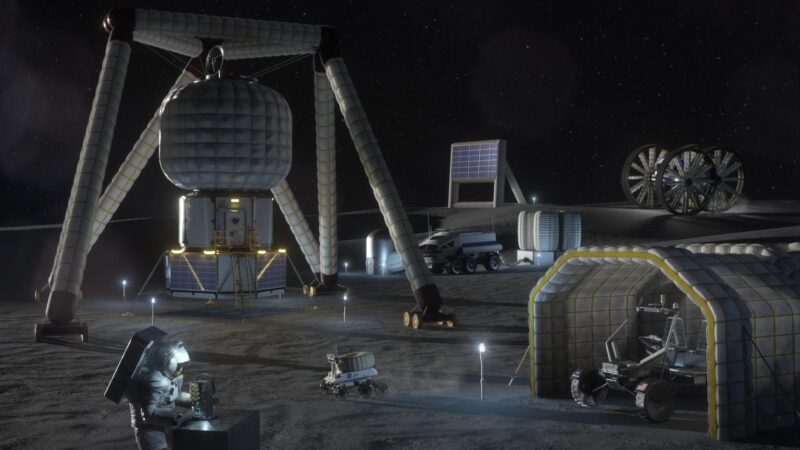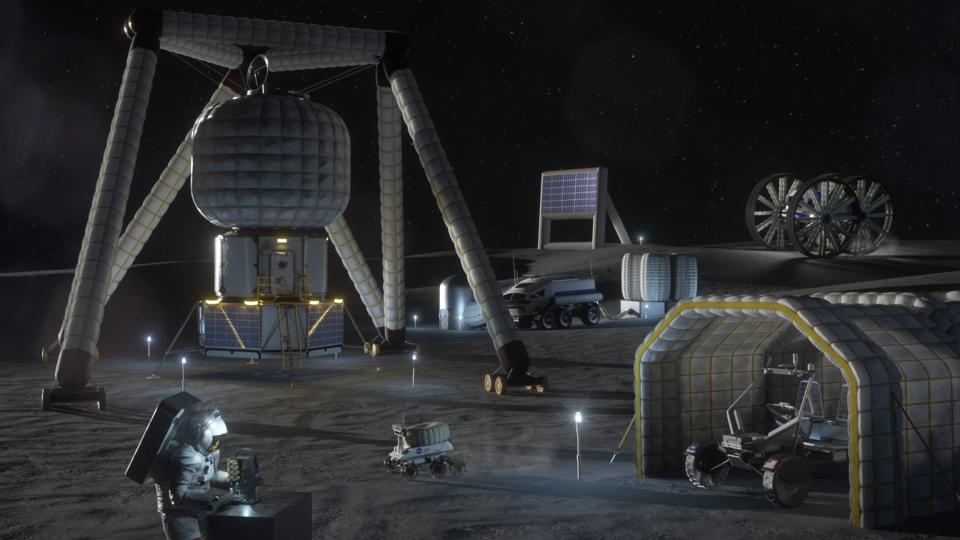Artist’s rendering of a future lunar mining and habitat concept on the Moon. Image courtesy of NASA.
NASA, “Moon Mining Activity” Jan 17 2024
Over the years, myself and others have written extensively about why the West must prevail in what is now widely recognized as the “Second Space Race.” Winning the first space race was one of the most visible demonstrations that democratic capitalism could out-innovate and surpass Soviet-style communism. Nearly 60 years later, a new race is well underway, testing our world-leading innovation economy and trillions in private capital with even more at stake. The prize this time is no longer a flag or a footprint, but creating the foundation for the first off-world economy to strengthen life on Earth and ensure a sustainable future in space.
When President Jefferson sent Lewis and Clark west, discovery was their mission. But, much like our Apollo program, it was only the beginning. It took decades of steady policy and private persistence to transform that wilderness they mapped into the economic juggernaut we know today. A similar journey will unfold on the Moon. The lunar frontier will not be secured by a one-and-done photo op, but through an analogous combination of public purpose and private enterprise that once defined the American frontier. China understands this well and is acting accordingly. We must act as if we do too.
The Moon’s future is no longer merely symbolic of political ideology — it is about strategic positioning for humanity’s future. The question is not who can reach the surface, but who will secure and develop it for the benefit of humankind. Through a deliberate sequence of missions, Beijing has built the foundation for a permanent lunar presence that will serve as its base of operations in cislunar space. Its objective is clear: to seize the high ground and control access to its resources. This is not a race for headlines but a contest to define the strategic and economic order of the next century — and China is playing for keeps.
In Washington, debate continues over where to direct scarce resources. Two schools of thought dominate. The “Occupy Mars” camp measures leadership by how far human exploration can reach. The “Colonize the Moon” camp recognizes that lasting influence will only come from building a working extension of Earth’s economy. For the foreseeable future, the Moon must take priority. Much like a nation waging war on multiple fronts, America lacks the resources and industrial capacity to pursue both the Moon and Mars at once. And just as fighting on two fronts risks defeat, a divided focus ensures we will secure neither. History is replete with great powers that fell to the same impatience and overreach.
Organizations do their best work when their goals are clear and their purpose aligned — and NASA must do the same. SpaceX and other private companies are working feverishly to tackle the immense challenges that Mars presents, but even if NASA devoted its entire budget to the effort, it would still fall far short. For that reason alone, sending an astronaut to the Red Planet and returning her safely remains a distant prospect — and a national commitment to do so should be deferred. Until breakthroughs in energy and life-support systems make interplanetary travel routine, America must concentrate its limited resources on securing the Moon. It is strategically vital, economically attainable, and operationally realistic.
Prioritizing the Moon is not a rejection of further human exploration — it is securing the gains won in the last century to maintain space dominance in this one. Ceding it to China will endanger national security in the near term and restrict access to vital resources for generations to come. The Moon is rich in helium-3, a critical isotope for quantum computing and clean nuclear fusion. Unlocking this lunar resource has the potential to help solve Earth’s energy and environmental challenges while enabling advanced propulsion for deep-space exploration. Water ice at the lunar poles can support both life and fuel production, making a sustained presence and further exploration possible. Mars must remain on our long-term horizon, but the Moon is the foundation upon which that future must be built.
Fortunately, we already have most of the tools. Acting NASA Administrator Sean Duffy has just taken bold action to reverse an earlier decision to downsize the agency’s lunar lander program. Competition has always been the cornerstone of NASA’s public-private partnerships — and it must remain so. Through the Artemis program and Commercial Lunar Payload Services initiative, NASA has created a model where government purpose aligns with private innovation and capital. Their first missions to the Moon’s mineral- and water-rich South Pole will reestablish an American presence and lay the groundwork for a sustainable lunar economy. Private investment is already flowing into ventures betting that lunar resources will one day fuel near-limitless clean energy through fusion.
The Second Space Race will not be won with just flags and footprints, but with factories, networks, and markets that sustain life and commerce on Earth and beyond. It begins on the Moon, where control of resources, access, and data will determine who leads. The next frontier is no longer on the horizon — it’s in our orbit.









